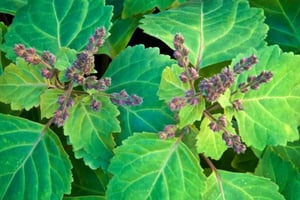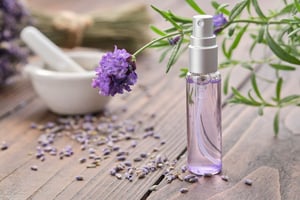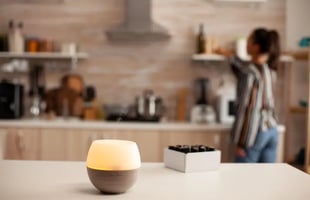Essential oils and candle making: technical protocol
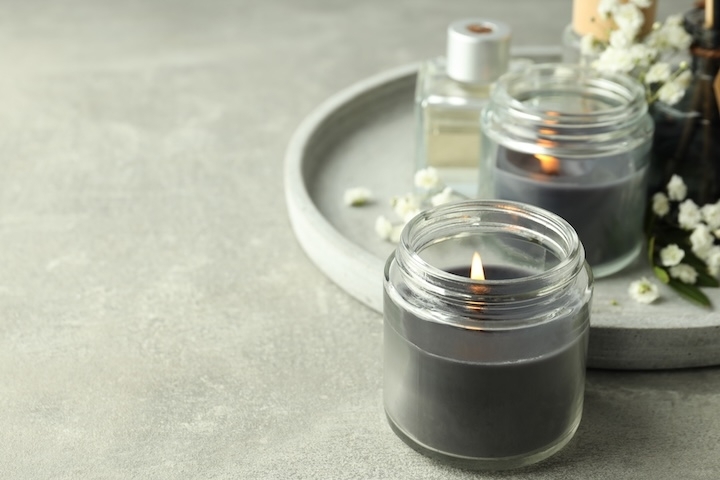
April 26, 2025
How to use essential oils safely in candle making?
Essential oils for candles: are they really safe?
Imagine the warm ambience of a handmade or homemade candle diffusing the natural aromas of lavender or ylang-ylang. Seductive, isn't it? Yet behind this idyllic image lies a more complex reality that many artisanal candle makers are unaware of.
Essential oils, those aromatic concentrates extracted from plants, offer an attractive alternative to synthetic fragrances. But did you know that some can ignite at surprisingly low temperatures? Or that their chemical composition can change under the effect of heat?
In this comprehensive guide, we demystify the use of essential oils in candles, revealing the safe practices that experts apply. Whether you're an enthusiastic novice or a seasoned artisan, you'll discover why not all essential oils are created equal when it comes to incorporating them into candle wax.
Essential oils in candles: benefits and considerations
The appeal of essential oils in candle-making is undeniable. These natural extracts offer not only authentic fragrances but also aromatic properties that can positively influence our mood and well-being. However, contrary to popular belief, their use is not without risk.
Why do so many designers turn to essential oils to scent their candles?
There are many reasons, often linked to a search for authenticity:
- Natural option: Extracted directly from plants, essential oils represent an alternative to synthetic fragrances, especially when they are organically grown.
- Aromatic properties: Certain essential oils, such as True Lavender or Eucalyptus radiata, are recognized for their relaxing or stimulating effects.
- Customization: unique blends can be created to suit users' olfactory preferences
- Air purification: Some essential oils have antiseptic properties that can help to purify the air in a room.
The specific challenges of essential oils in candles
Unlike synthetic fragrances specially designed for candles, essential oils have several characteristics that complicate their use:
- Variable volatility: Some top notes evaporate very quickly.
- Heat sensitivity: aromatic molecules can degrade at high temperatures
- Flammability: Flash points vary considerably from one essential oil to another.
- Concentration required: Often higher than synthetic fragrances for an equivalent olfactory result.
However, with the right knowledge and techniques, these challenges can be overcome.
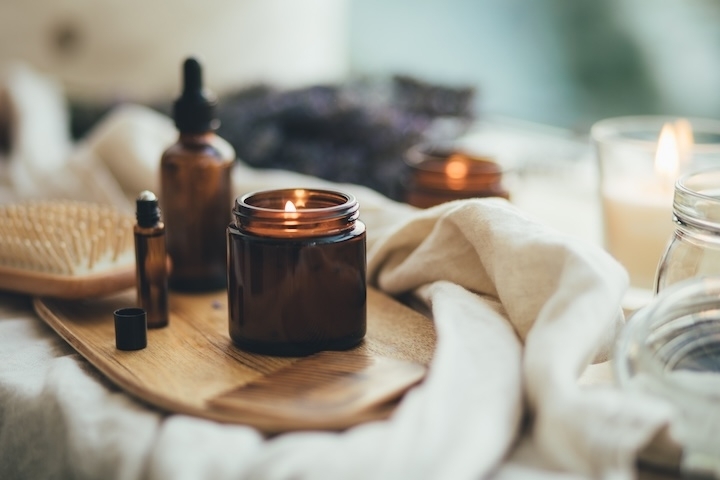
Critical points: the notion of flash point
One of the fundamental concepts to master when using essential oils in candles is that of the flash point. This notion is crucial to both the safety and effectiveness of your creations.
What is the flash point and why is it so important for your candles?
The flash point is the lowest temperature at which a liquid gives off enough vapor to ignite on contact with a source of ignition. In simple terms, it's the temperature at which essential oils become flammable.
When making candles, we generally recommend using essential oils with a flashpoint above 65°C. Why is this? Because the temperature of a candle's molten wax is generally between 60 and 80°C.
How does flash point affect the safety of your creations?
When you add an essential oil to hot wax, three scenarios can occur depending on its flash point:
- Flashpoint too low (< 60°C): the essential oil can ignite instantly on contact with the wax, creating a fire hazard
- Medium flash point (60-65°C): The essential oil does not ignite immediately, but may create an unstable candle with a risk of ignition on combustion.
- Adequate flash point (> 65°C): The essential oil mixes with the wax without risk of ignition, creating a safe, stable candle.
A safety margin of at least 5-10°C between the flash point of the essential oil and the temperature of the wax is therefore strongly recommended.
Flash points of some common essential oils
|
Essential oil |
Flash point (°C) |
Candle safety |
|
Fine lavender(Lavandula angustifolia) |
71°C |
Excellent ✓ |
|
Cinnamon(Cinnamomum verum) |
88°C |
Excellent ✓ |
|
Tea Tree(Melaleuca alternifolia) |
58°C |
Medium ⚠ |
|
Eucalyptus globulus(Eucalyptus globulus) |
44°C |
Not recommended ✗ |
|
Lemon(Citrus limon) |
53°C |
Not recommended ✗ |
|
Patchouli(Pogostemon cablin) |
116°C |
Excellent ✓ |
|
Ylang-Ylang(Cananga odorata) |
78°C |
Excellent ✓ |
These significant variations in flash points explain why not all essential oils are suitable for candle-making. Using an essential oil with too low a flash point can not only alter its aromatic properties but also present a flammability risk.
Appendix 3 below provides a more complete list, in descending order, of the flash points of essential oils, their compatibility with candles and their aromatherapeutic qualities.
How to calculate the flash point of an essential oil blend
If you want to create a customized blend of essential oils for your candles, you need to estimate the resulting flash point. To do this, you can use this weighted average formula:
(Volume HE A × Flash point HE A) + (Volume HE B × Flash point HE B)
-----------------------------------------------------------------------------------------------
Total volume of mixture
Practical example: for a 5 mL mixture of 2.5 mL sweet orange(Citrus sinensis) essential oil (flash point: 48°C) and 2.5 mL cinnamon (flash point: 88°C):
(2.5 mL × 48°C) + (2.5 mL × 88°C) = 120 + 220 = 340/5 = 68°C
---------------------------------------------- -------------
5 mL 5
The estimated final flash point of the mixture is 68°C, making it suitable for candle-making.
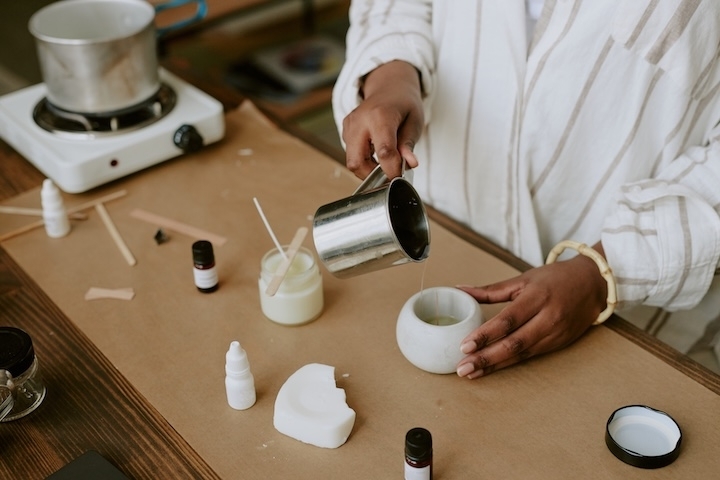
Practical steps for incorporating essential oils into your candles
This section guides you step-by-step through the process of incorporating essential oils into your creations, focusing on the technical aspects essential to success.
What is the ideal dosage of essential oils in wax?
Dosage is crucial not only for fragrance intensity, but also for safety and burn quality:
- Standard dosage: 5-6% of the total weight of the wax (i.e. around 30 drops for 500g of wax).
- For a light fragrance: 3% of wax weight
- For a stronger fragrance: up to 6% maximum
Caution: an overdose may affect the candle's ability to burn properly and potentially create an unstable flame. Unlike synthetic fragrances, which work well at 2-3%, essential oils often require a higher percentage for optimal diffusion.
At exactly what temperature should essential oils be added?
The temperature at which you add essential oils is crucial to preserving their aromatic properties and avoiding the risk of inflammation:
- Melt your wax in a bain-marie
- Immediately remove the container from the heat source once the wax has completely melted
- Allow to cool to a temperature of around 55-60°C (always below the flash point of your oils).
- Add your essential oils and stir carefully for at least one minute to ensure even distribution
- Quickly pour into the containers prepared with the wicks
For more information on the different waxes suitable for essential oils in candles, please see Appendix 2 below.
How to test the distribution of essential oils in your wax?
Before producing candles in quantity, perform this simple test:
- Prepare a small sample of wax with your essential oils, as described above.
- Pour it into a small transparent container
- After solidification, observe whether any oil "pockets" have formed (a sign of poor incorporation).
- Light the sample and evaluate :
- Fragrance intensity, cold and hot
- Flame stability
- How the wax melts (ideally, a uniform wax bath)
This methodical approach will enable you to adjust your formulations before larger-scale production.
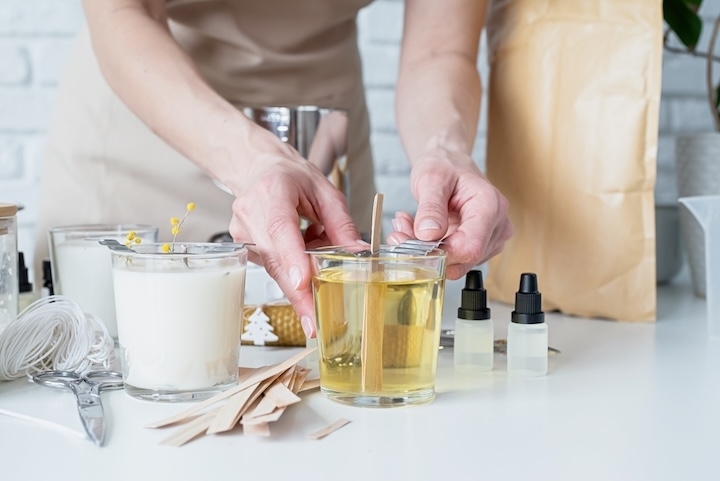
Precautions and potential risks
Safety must always be your priority when using essential oils in candles. This section addresses potential risks and essential preventive measures.
Are essential oils in candles toxic?
Scientific research suggests that essential oils in candles are generally of low toxicity when the instructions for use are followed. According to Gigon (2019), when used in ambient air as recommended, essential oils present a satisfactory tolerance.
However, certain specific risks do exist:
- Volatile organic compounds (VOCs): Essential oils release VOCs which, in excessive concentrations, can irritate the respiratory tract.
- Chemical transformation: Heat can modify certain aromatic molecules, potentially creating irritating compounds.
- Allergens: Some essential oils contain natural allergens that can trigger reactions in sensitive individuals.
What precautions should be taken to ensure safe use?
To minimize risks while enjoying the benefits of essential oils:
- Adequate ventilation: Make sure the room is well ventilated when using essential oil candles.
- Limited exposure time: Do not burn candles for extended periods (no more than 3-4 consecutive hours).
- Sensitive populations: Children, pregnant women, asthmatics, epileptics and pets may be more vulnerable to the effects of essential oils.
- Preliminary test: If you are prone to allergies, first light the candle in a well-ventilated room for a short period to assess your tolerance.
How to recognize an adverse reaction to essential oils?
Be alert to the following symptoms when using essential oil candles:
- Headaches or dizziness
- Irritation of the eyes, nose or throat
- Difficulty breathing or chest tightness
- Nausea or malaise
If these symptoms occur, extinguish the candle immediately, ventilate the room and go outside for fresh air.
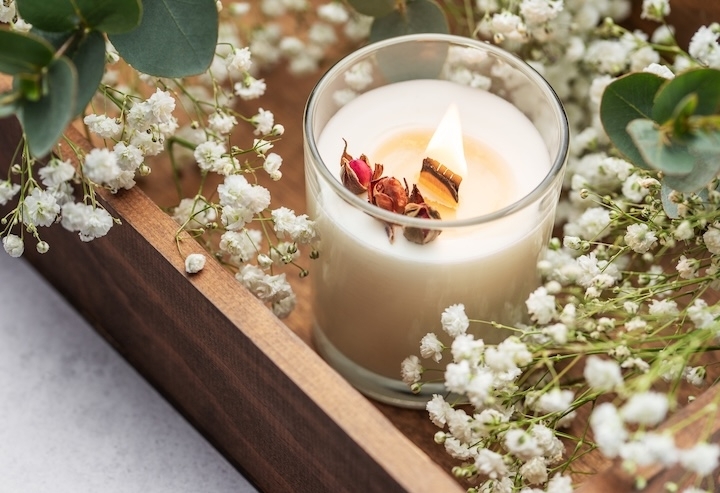
Alternatives to essential oils: Grasse fragrances
Faced with the challenges posed by essential oils, many professional candle makers are turning to Grasse fragrances, specifically designed for this purpose. These fragrances offer several advantages:
- Superior thermal stability
- More consistent, longer-lasting fragrance delivery
- Greater variety of scents available
- Tested for safety during combustion
- Generally more economical
The choice between essential oils and Grasse fragrances will depend on your priorities: if you're primarily looking for natural aromatic properties, essential oils may be appropriate despite their limitations. If performance and consistency are your priorities, specialized fragrances are often a better option.
If you've read this far, you're interested in the natural properties of essential oils. For more information, please see Appendix 1 below for a more detailed comparison between essential oils and Grasse perfumes.
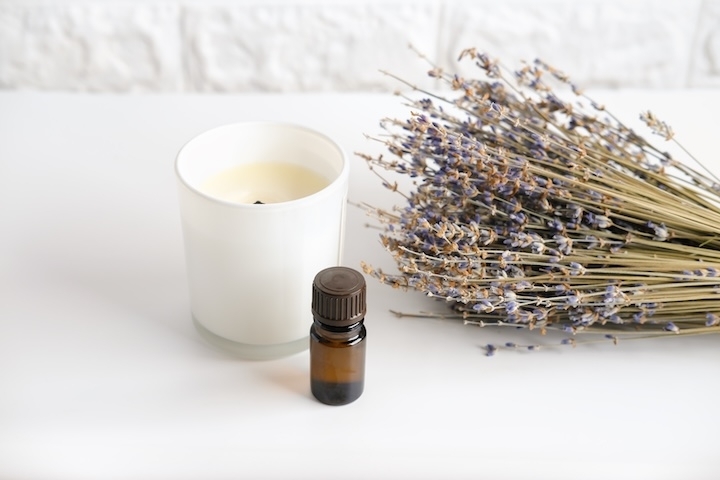
Selecting the right essential oils for candles
To maximize the safety and effectiveness of your scented candles, here is a selection of recommended essential oils with a sufficiently high flash point:
- Fine lavender(Lavandula angustifolia) (71°C): Relaxing and soothing
- Patchouli(Pogostemon cablin) (116°C): Earthy and deep
- Cinnamon(Cinnamomum verum) (88°C): Warm and spicy
- Ylang-Ylang(Cananga odorata) (78°C): Floral and exotic
- Petitgrain Bigarade(Citrus aurantium var. amara) (75°C): Fresh and subtly lemony
- Clary sage(Salvia sclarea) (85°C): Herbaceous with amber notes
- Peppermint(Mentha x piperita) (77°C): Refreshing and stimulating.
These essential oils can be used alone or combined to create unique blends, always ensuring that the estimated flash point of the blend remains above 65°C.
Tips for an optimal experience
To get the most out of your essential oil candles while minimizing risks:
- First use: Burn long enough for the wax bath to reach the edges of the container (approx. 1 hour per 2.5 cm diameter).
- Between uses: Cut the wick to about 5 mm before each lighting.
- Supervision: Never leave a burning candle unattended.
- Placement: Keep candles away from draughts, flammable materials and out of reach of children and pets.
- Storage: Store your candles in a cool, dark place to preserve the properties of the essential oils.
Combine creativity and safety in your essential oil candles
At the end of this comprehensive guide, you'll have the essential knowledge to incorporate essential oils into your candles in a way that's both creative and safe. The technical challenges inherent in this practice should not discourage you, but rather encourage you to adopt a thoughtful, methodical approach.
What are the keys to success for your essential oil candles?
The success of your creations rests on three fundamental pillars:
- Careful selection of essential oils: Choose essences with a flash point above 65°C, such as fine lavender(Lavandula angustifolia), patchouli(Pogostemon cablin) or ylang-ylang(Cananga odorata).
- Technical mastery: scrupulously adhere to recommended incorporation temperatures and dosages.
- Gradual experimentation: test your formulations on a small scale before embarking on larger-scale production.
Remember that every detail counts: the type of wax, the wick chosen, the incorporation temperature and the precise dosage of essential oils all contribute to the quality and safety of the final product.
Towards responsible, personalized practice
The art of creating candles with essential oils offers you the opportunity to design unique olfactory ambiences, in line with your personal preferences and the specific benefits you're looking for. This approach is perfectly in line with a wider trend towards handcrafted or homemade, natural and personalized products.
Whether you're creating these candles for your own personal use, as gifts, or even for commercial purposes, the balance between creativity and prudence will always be the key to a successful and fulfilling experience.
Feel free to consult the detailed appendices below to deepen your knowledge and gradually explore different essential oil combinations to develop your own olfactory signature. The world of essential oils for candles is vast and exciting - it's up to you to explore it safely!
Appendix 1: Comparison between Grasse perfumes and essential oils
|
Criteria |
Grasse perfumes |
Essential oils |
|
Origin |
Synthetic or semi-synthetic |
100% natural (extracted from plants) |
|
Thermal stability |
Excellent - specifically formulated to withstand high temperatures |
Variable - some essential oils degrade under heat |
|
Fragrance diffusion |
Constant and long-lasting throughout combustion |
Often irregular, can fade rapidly |
|
Olfactory palette |
Very broad - can reproduce almost any scent |
Limited to scents available in nature, but creativity can be expressed in blends |
|
Flash point |
Generally high (>90°C) - designed for candles |
Variable (30-120°C) - requires careful selection |
|
Olfactory intensity |
Strong and constant at low concentrations (2-3%) |
Often requires higher concentrations (5-6%) |
|
Price |
Generally more economical, especially for larger volumes |
More expensive, especially for rare essential oils |
|
Therapeutic benefits |
None - designed solely for their fragrance |
Potential aromatherapeutic effects depending on the essential oil |
|
Environmental impact |
Varies according to formulation (some are biodegradable) |
Generally more ecological, but depends on extraction methods |
|
Consistency between batches |
Perfect - identical formulation for each production run |
Variable - depends on plant growing conditions |
|
Health risks |
Low - tested for combustion safety |
Potential risks for sensitive populations (allergies, irritations) |
|
Compatibility with waxes |
Excellent - formulations suitable for all types of waxes |
Variable - may affect texture and combustion of some waxes |
Appendix 2: Wax types and safety optimization
The choice of wax is decisive for compatibility with essential oils and the overall safety of your candle. Contrary to popular belief, the addition of vegetable oils is not recommended, as it can compromise the candle's combustion and stability.
Comparison of different waxes for essential oil candles
|
Type of wax |
Melting temperature |
Compatibility with HE |
Advantages |
Disadvantages |
|
Soy wax |
45-52°C |
Excellent |
- Lower melting point (safer) - Burns more slowly |
- Fragrances do not hold up as well over time - May present visual irregularities |
|
Beeswax |
62-65°C |
Good |
- Natural and biodegradable - Natural, sweet, honey-like scent - Excellent fragrance retention - Air purification |
- High cost - Higher melting point - Requires specific techniques |
|
Rapeseed wax |
42-48°C |
Very good |
- Very low melting point - Excellent diffusion of essential oils - Plant-based and biodegradable |
- Limited availability - May be more brittle |
|
Coconut wax |
38-44°C |
Excellent |
- Lowest melting point - Ideal diffusion of essential oils - 100% vegetable and biodegradable |
- Softer texture - May require stabilizers |
|
Kerosene |
55-65°C |
Medium |
- Good fragrance retention - Easy to use - Affordable cost - Stable texture |
- Petrochemical, non-ecological - Higher melting point |
|
Hybrid waxes (soy + kerosene) |
50-58°C |
Good |
- Compromise between performance and naturalness - Better stability than pure soy |
- Partially derived from petroleum |
Strategies for optimizing the safety of essential oil candles
1. Choosing the right wax/essential oil combination
For essential oils with a low flash point (< 65°C), choose waxes with a low melting point:
- Coconut wax (38-44°C) is ideal for essential oils such as Eucalyptusglobulus or Citruslimon.
- Soy wax (45-52°C) is well suited to essential oils with a medium flash point, such as Tea tree(Melaleuca alternifolia).
2. Wax blending" technique
To simultaneously improve fragrance diffusion and safety, you can create customized blends:
- 80% soy wax + 20% beeswax: better fragrance hold with moderate melting point
- 90% coconut wax + 10% soy wax: excellent for essential oils with very low flash points
3. Double-casting method
Professional technique for integrating essential oils more safely:
- First pour: pure wax without essential oils to form the base of the candle.
- Second pour after partial cooling: blend of low-melting wax (coconut or soy) with essential oils
This method creates a double-layer candle in which the essential oils are incorporated into the outer layer at a lower temperature, considerably reducing the risks associated with flash point.
Appendix 3: Complete table of essential oils - Flash points, odors and effects
|
Essential oil |
Latin name |
Flash point (°C) |
Olfactory profile |
Generally recognized aromatherapeutic effects |
Compatibility with candles |
|
Patchouli |
Pogostemon cablin |
116°C |
Woody, earthy, musky with sweet notes |
Relaxing, balancing, aphrodisiac |
Excellent - Very high flash point allowing a large safety margin |
|
Clove |
Eugenia caryophyllus |
120°C |
Spicy, warm, powerful |
Stimulating, warming |
Excellent - But use sparingly, as very powerful fragrance |
|
Myrrh |
Commiphora myrrha |
>111°C |
Warm, spicy, woody, slightly smoky |
Soothing, meditative, spiritual |
Excellent - Perfect for creating a meditative atmosphere |
|
Cade Wood |
Juniperus oxycedrus |
110°C |
Smoky, powerful, woody |
Purifying, protective, soothing |
Excellent - Ideal for neutralizing odors |
|
Sweet ginger |
Gaultheria fragrantissima |
94°C |
Menthole, fresh, medicinal |
Refreshing |
Very good - Persistent minty fragrance |
|
Cinnamon (leaves) |
Cinnamomum verum |
94°C |
Spicy, warm, sweeter than bark |
Stimulating, warming, invigorating |
Very good - Ideal for winter candles |
|
Cinnamon (bark) |
Cinnamomum verum |
88°C |
Spicy, warm, sweet |
Stimulating, warming, energizing |
Very good - Perfect for autumn/winter ambience |
|
Ylang-Ylang |
Cananga odorata |
78°C |
Floral, exotic, sweet |
Relaxing, aphrodisiac, balancing |
Very good - Creates a sensual atmosphere |
|
Peppermint |
Mentha x piperita |
77°C |
Minty, fresh, penetrating |
Stimulating, refreshing, brightening |
Good - pronounced refreshing effect |
|
Lavender stoechade |
Lavandula stoechas |
76°C |
Floral, herbaceous, more camphoraceous than fine lavender |
Relaxing, purifying, balancing |
Good - Alternative to fine lavender |
|
Exotic verbena |
Litsea cubeba |
76°C |
Lemony, fresh, green |
Soothing, refreshing, anti-stress |
Good - Long-lasting lemon fragrance |
|
Bitter orange petitgrain |
Citrus aurantium |
75°C |
Floral, fresh, slightly bitter |
Soothing, balancing, anti-stress |
Good - Fresh, elegant fragrance |
|
Tropical basil |
Ocimum basilicum |
75°C |
Aniseed, fresh, herbaceous |
Mental stimulant, clarifying, tonic |
Good - Use sparingly (strong fragrance) |
|
Fine Lavender |
Lavandula angustifolia |
71°C |
Floral, herbaceous, soft |
Relaxing, soothing, balancing |
Good - The benchmark for relaxing candles |
|
Tarragon |
Artemisia dracunculus |
70°C |
Aniseed, herbaceous, fresh |
Calming, balancing |
Good - Subtle, original fragrance |
|
Fragrant Verbena |
Lippia citriodora |
69°C |
Lemony, fresh, herbaceous |
Calming, anti-stress |
Medium to good - Delicate lemony fragrance |
|
Ginger |
Zingiber officinale |
65°C |
Spicy, warm, lemony |
Stimulating, tonic, warming |
Medium - Just at the recommended threshold |
|
Lavandin super |
Lavandula x intermedia |
65°C |
Floral, camphorated, fresher than lavender |
Purifying, toning, balancing |
Medium - More affordable than fine lavender |
|
Rose Geranium |
Pelargonium graveolens |
64°C |
Floral, pink, fresh |
Balancing, soothing, invigorating |
Medium/Risked - Slightly below ideal threshold |
|
Mountain savory |
Satureja montana |
63°C |
Herbaceous, spicy, penetrating |
Stimulating, invigorating, warming |
Risky - Below recommended threshold, to mix |
|
Spearmint |
Mentha spicata |
63°C |
Minty, fresh, herbaceous |
Invigorating, refreshing, stimulating |
Risky - Flash point limit, mix |
|
Sweet fennel |
Foeniculum vulgare |
63°C |
Aniseed, mild, herbaceous |
Balancing, soothing |
Risky - To mix |
|
Wild oregano |
Origanum vulgare |
62°C |
Herbaceous, spicy, powerful |
Stimulating, purifying, tonic |
Risky - Avoid or mix |
|
Thyme thujanol |
Thymus vulgaris ct. thujanol |
60°C |
Herbaceous, mild, less aggressive than classic thyme |
Immunostimulant, purifying |
Not recommended - Insufficient flash point |
|
Marjoram |
Origanum majorana |
59°C |
Herbaceous, mild, slightly camphorated |
Calming |
Not recommended - Too risky |
|
Bergamot |
Citrus bergamia |
59°C |
Citrus, fresh, slightly floral |
Refreshing |
Not recommended - Flash point too low |
|
Neroli |
Citrus aurantium |
59°C |
Floral, delicate, slightly lemony |
Soothing, anti-stress, regenerating |
Not recommended - better suited to cold diffusion |
|
Tea tree |
Melaleuca alternifolia |
58°C |
Medicinal, fresh, herbaceous |
Purifying, immunostimulant |
Not recommended - Insufficient flash point |
|
Lavender aspic |
Lavandula latifolia |
57°C |
Camphorated, more medicinal than fine lavender |
Soothing, purifying |
Not recommended - Flash point too low |
|
Borneol thyme |
Thymus vulgaris ct. borneol |
57°C |
Herbaceous, less aggressive than classic thyme |
Immunostimulant, balancing |
Not recommended - Risk of inflammation |
|
Coriander |
Coriandrum sativum |
56°C |
Spicy, warm, slightly citrusy |
Invigorating, stimulating |
Strongly not recommended - Flash point too low |
|
Thyme linalool |
Thymus vulgaris ct. linalool |
55°C |
Herbaceous, sweet, floral |
Balancing, mild stimulant |
Strongly not recommended - Insufficient flash point |
|
Carrot |
Daucus carota |
54°C |
Earthy, sweet, slightly woody |
Invigorating |
Not recommended - Risk of inflammation |
|
Damask Rose |
Rosa damascena |
54°C |
Floral, rich, deep |
Harmonizing, soothing, regenerating |
Not recommended - Very expensive and low flash point |
|
Lemon |
Citrus limon |
53°C |
Citrus, fresh, sparkling |
Toning, purifying, stimulating |
Not recommended - Dangerous flash point |
|
Niaouli |
Melaleuca quinquenervia |
53°C |
Camphorated, fresh, medicinal |
Immunostimulant, purifying |
Strongly not recommended - High risk |
|
Roman chamomile |
Anthemis nobilis |
52°C |
Fruity, apple, herbaceous |
Calming |
Strongly not recommended - Insufficient flash point |
|
Eucalyptus radiata |
Eucalyptus radiata |
51°C |
Fresh, camphorated, medicinal |
Respiratory, purifying, refreshing |
Strongly not recommended - High risk |
|
Ravintsara |
Cinnamomum camphora |
50°C |
Camphorated, eucalyptus, mild |
Antiviral, immunostimulant |
Strongly not recommended - Dangerous flash point |
|
Parsley |
Petroselinum crispum |
50°C |
Green, herbaceous, fresh |
Invigorating |
Strongly inadvisable - High risk |
|
Mandarin |
Citrus reticulata |
49°C |
Citrus, mild, sweet |
Calming, relaxing |
Absolutely avoid - High risk of inflammation |
|
Sweet orange |
Citrus sinensis |
48°C |
Citrus, sweet, fresh |
Soothing, relaxing, anti-stress |
Absolutely avoid - Very low flash point |
|
Laurier noble |
Laurus nobilis |
48°C |
Spicy, aromatic, slightly fruity |
Invigorating, stimulating, purifying |
Absolutely avoid - Insufficient flash point |
|
Black spruce |
Picea mariana |
46°C |
Woody, fresh, balsamic |
Invigorating, respiratory, energizing |
Absolutely avoid - Flash point too low |
|
Saro |
Cinnamosma fragrans |
45°C |
Fresh, camphorated, mild eucalyptus |
Antiviral, immuno-stimulant, respiratory |
Absolutely avoid - Dangerous flash point |
|
Grapefruit |
Citrus paradisi |
44°C |
Citrus, fresh, slightly bitter |
Stimulating, invigorating |
Absolutely avoid - Very low flash point |
|
Eucalyptus globulus |
Eucalyptus globulus |
44°C |
Camphorated, fresh, medicinal |
Respiratory, purifying, stimulating |
Absolutely avoid - Insufficient flash point |
|
Galbanum |
Ferula galbaniflua |
43°C |
Green, earthy, resinous |
Soothing |
Absolutely avoid - Dangerous flash point |
|
Black pepper |
Piper nigrum |
43°C |
Spicy, hot, pungent |
Invigorating, stimulating, warming |
Absolutely avoid - High risk |
|
Rosemary cineole |
Rosmarinus officinalis |
43°C |
Herbaceous, camphorated, fresh |
Stimulating, invigorating, energizing |
Absolutely avoid - Flash point too low |
|
Angelica (root) |
Angelica archangelica |
43°C |
Earthy, musky, spicy |
Balancing, invigorating |
Absolutely avoid - Risk of inflammation |
|
Hemlock |
Tsuga canadensis |
42°C |
Woody, balsamic, sweet |
Soothing, balancing, respiratory |
Absolutely avoid - Insufficient flash point |
|
Balsam fir |
Abies balsamea |
42°C |
Woody, resinous, fresh |
Respiratory, soothing, purifying |
Absolutely avoid - High risk |
|
Frankincense |
Boswellia carterii |
41°C |
Woody, resinous, slightly lemony |
Meditative, spiritual, soothing |
Extremely low flash point |
|
Juniper berry |
Juniperus communis |
41°C |
Woody, resinous, spicy |
Purifying, invigorating |
Absolutely avoid - Dangerous flash point |
|
Scots pine |
Pinus sylvestris |
40°C |
Softwood, fresh, woody |
Respiratory, invigorating, purifying |
Absolutely avoid - Very high risk of inflammation |
|
Nutmeg |
Myristica fragrans |
38°C |
Spicy, woody, warm |
Invigorating, stimulating, warming |
Absolutely avoid - Dangerous flash point |
|
Myrtle |
Myrtus communis |
36°C |
Fresh, herbaceous, slightly camphorated |
Respiratory, balancing, purifying |
Absolutely avoid - Extremely low flash point |
|
Cypress |
Cupressus sempervirens |
35°C |
Softwood, woody, fresh |
Respiratory, invigorating |
Absolutely avoid - Dangerous flash point |
|
Pistachio mastic |
Pistacia lentiscus |
33°C |
Resinous, woody, earthy |
Invigorating |
Extremely low flash point |
|
White fir |
Abies alba |
32°C |
Woody, resinous, fresh |
Respiratory, purifying, invigorating |
Absolutely avoid - Lowest flash point of all EOs, maximum risk |

